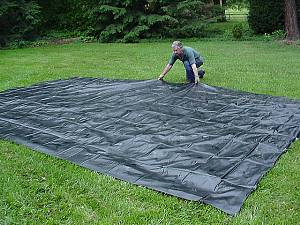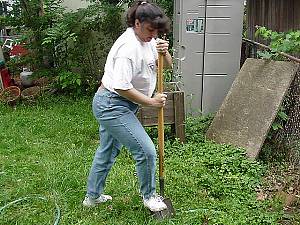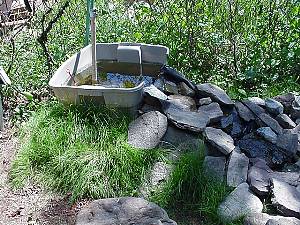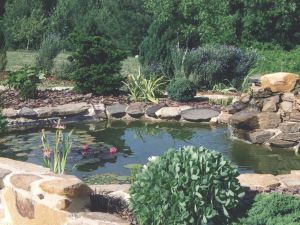|
Install the Liner
Once you have the hole
properly excavated, layout the pond liner. For this step, it is necessary to
have someone help you get the liner into the hole without knocking all of the
carpet from the walls of the pond.
Position one person at each
end of the liner, lift it up and place it in the hole. Take off your shoes and
get down into the hole. Flatten out the liner as much as possible and carefully
fold it so that it goes around the corners of the pond smoothly. Alternatively,
you can simply plop the liner into the hole, start filling it and wait for the
water to flatten the liner. We prefer to smooth the liner by hand. This
normally makes it easier to conceal the liner later.
Regardless of the method that
you use, once the liner is in the hole, fill the pond up about 1/4 of the way.
Carefully inspect the bottom of the pond for bumps. If you see any, lift the
liner (keeping the water on the inside) and remove the debris. After everything
on the bottom looks good, continue filling the pond and, from time to time, pull
up on the edges of the liner to make sure that it settles into the corners. As
the water fills the pond, it will force the liner against the walls of the pond,
continue to monitor the liner for bumps that show up and remove the offending
object.
After the pond is filled with
water, it is a good idea to go ahead and get into the water (it's cold!) and
smooth the liner out.
After the liner is squared
away, treat the water to remove the chlorine. There are several commercial
products available for this and they normally have instructions with them. Let
the water sit overnight.
|

|





